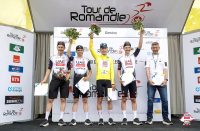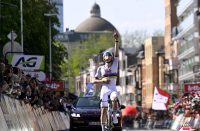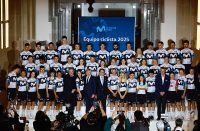Cycling Doping History Story Part 1 with an emphasis on the Tour de France
With the current furor over Lance Armstrong’s doping story, there seems to be a whole lot that the mass media is leaving out of the picture. For someone unfamiliar with the sport, it seems as if all the doping started with Lance. Doping cop Taggert claims it’s the biggest doping network in history. He doesn’t know.
Peloton Post doesn’t endorse cheating. But while working on the English language version of “Days of Glory, Days of Hell” there were numerous stories of the early years of the Tour de France where doping was not only tolerated but seemingly expected. It wasn’t until the mid 1960s that performance-enhancing drugs were made “illegal”. In 1998 was the explosive Festina Affair which nearly brought down the race that year. One would have thought that to be enough to put an end to doping, but instead cyclists just found other avenues to continue. Additional research has shed light on the doping and other ways of cheating in cycling. Some questions we’ve heard from people in France ask why did Armstrong do an interview with national television. They don’t understand why Floyd Landis who was on a totally different team a year after Armstrong retired and wasn’t even at the race, felt compelled to blame Armstrong for his (Floyd’s) own doping actions.
Following is a timeline of lots of doping in cycling, mostly in relation to the Tour de France with a few instances at the Giro d’Italia and Vuelta a Espana.
The first Tour de France started in 1903, but doping in cycling pre-dates that.
“Drug-taking in cycling predates the Tour de France. “It existed, it has always existed”, said the French reporter and author, Pierre Chany, who followed 49 Tours before his death in 1996.”
“The use of strychnine, far from being banned, was thought necessary to survive demanding races”
1878
There were 6-Day races in London where cyclists raced on a track up to 18 hours a day for 6 days in a row. The soigneurs were said to have treated exhausted cyclists with nitroglycerine to improve breathing and stimulate their hearts. There were stories that it produced hallucinations in some. They also used strychnine which they thought helped tired muscles. And some used cocaine.
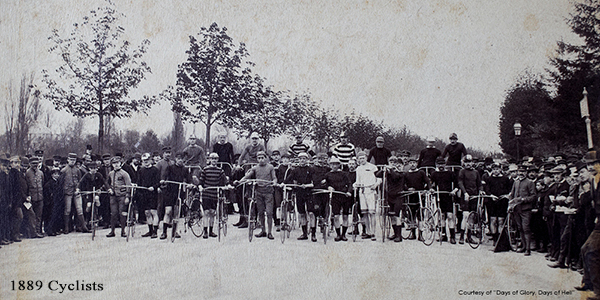
1896
A cyclist died of typhoid fever after the Bordeaux-Paris race. His manager, Choppy Warburton, was thought to be the instigator of drug-taking in cycling and was accused by cyclist, Jimmy Michael, of poisoning.
1903-1940s
Besides taking strychnine during the Tour de France, riders would take whatever to bring relief from the potholed roads and bikes with wooden wheels or metal tires. Some used alcohol and some used ether to deaden pain. They were said to put ether-drenched rags over their noses.
1904
Days of Glory, Days of Hell: “The riders had to race through all or at least part of the night in order to arrive the following afternoon… but that is not to say that underhand practices did not take place. Earlier … during the Bordeaux-Paris race, the organizers had been forced to deal with the problem of cheating…so much cheating occurred that the first 4 riders to finish were disqualified, making the 5th man home the victor. Exactly the same kind of scenario was about to unfold at the Tour. The riders disqualified from Bordeaux-Paris were Leon Georget, Petit-Breton, Cesar Garin and Rodolphe Muller. The 5th…Fernand Augereau…hadn’t cheated. He got into a fight with Garin who ended up smashing Augereau’s bike…Garin had paid him off to keep him quiet. All this goes to show that cheating was very much in evidence and that Garin, who would be stripped of the 1904 title, should already have had the 1903 Tour taken away from him.”
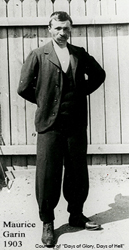
1905
Days of Glory: “Settling of scores continued as fans scattered nails across the road…” [to slow down the opposing riders].
1906
Days of Glory: “…Carrere, Gauban and Tuvach had caught the train in Dijon and been thrown out of the race..”
1911
Days of Glory: “Duboc was starting to take control as the race went over the Aspin, Peyresourde and Tourmalet, when he was suddenly forced to stop. He vomited in the ditch. Duboc had been poisoned.”
1912
Days of Glory: “Sabotage… Francois Lafoucade, who was linked to the poisoning of Duboc in 1911, was believed to have sabotaged the bike of the Italian rider Ottavio Pratesi in 1912…Found guilty and disqualified for life..”
1924
Convicts of the Road by Albert Londres: “You have no idea what the Tour de France is…We suffer from the start to the end. You want to know how we keep going? Here…” He pulled a vial from his bag. “That’s cocaine, for our eyes. This is chloroform, for our gums. This is liniment to put warmth back into our knees…And pills…The truth is..that we keep going on dynamite.” Francis Pelissier claims they kidded Londres about the cocaine and pills but were they kidding?
1930s
“The rule books given to riders in the 1930s by organizer Henri Desgrange reminded them that drugs were not among the items with which they would be provided” [by the race organizers].
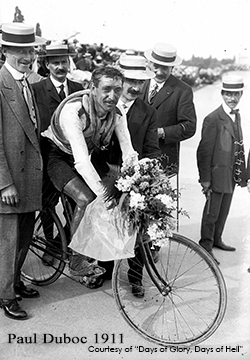
1935
Days of Glory: “Georges Speicher and Romain Maes remained faithful to Quintonine (quinquina, cola and coke) ‘the powerful tonic for the blood, muscles and nervous system.”
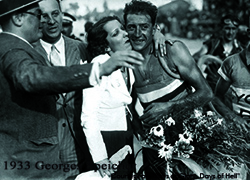
Rene Vietto recommended ‘le vin de Frileuse’. ..the Cornelian choice between Pernod, Cinzano and Ricqles. Restorative, Refreshing, Soothing or even dopant, at the time it was of little importance.”
“…following the victory of his protégé Romain Maes, directeur sportif Karel Steyaert…’doping on the Tour, it’s the steaks.’ Apparently Contador wasn’t the first for that one.
1938
Days of Glory: “…the evil of the Tour was pushing…In 1938 Georges Speicher…was photographed holding onto a car in the Pyrenees and was disqualified.”
1939-1945
Wall Street Journal: “World War II jump-starts the use of performance-enhancing drugs. Nazis are believed to have experimented with anabolic steroids; soldiers from the U.S., Japan and Germany used amphetamines to increase stamina. After the war, amphetamines become widespread in American sports.”
1949
Fausto Coppi admitted using amphetamines and said “those who claim that cyclists do not take amphetamines, it’s not worth talking to them about cycling.”
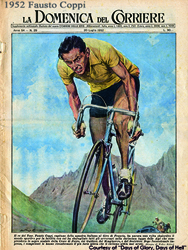
1955
French rider Mallejac was a victim of doping. He zigzagged all over the road near the top of Mont Ventoux and then collapsed. He had insisted that he’d been given a drugged bottle from a soigneur but it was never proven.
1956
“The Story of the Tour De France: 1965-2007”
According to Marcel Bidot, a cyclist from the late 1920s to early 1930s and then a team manager, said three quarters of the Tour peloton was doping.
All the members of a Belgian cycling team quit the race with a “mystery illness” that was suspected to be doping.
Days of Glory: “With its betrayals, sabotages and poisonings, the Tour could not help but tempt crime fiction writers. More than 20 have been inspired by Le Grande Boucle. …1956…publication in France-Soir of the serialization of a ‘police novel in the Tour de France written day by day through each stage…”
1960
Dictionnaire du dopage: “In 1960, Pierre Dumas walked into a hotel room on his nightly tour of teams to find eventual winner Gastone Nencini prone on his bed with a plastic tube running from each arm to a bottle containing hormones. However, the hormone injection was not illegal at the time, and indeed only few were disqualified or sanctioned whenever they were found out to use doping.”
Roger Riviere overshot a bend, fell into a ravine and broke his neck. He blamed the team mechanic but it later turned out that he’d taken so many doses of painkillers that his hands were too slow to operate the brakes.
Dane Knud Enemark Jensen collapsed and died at the 1960 Olympics. His autopsy found amphetamines and Ronicol (blood dilator) in his sytem.
1962
The Weil affair: German Hans Junkerman dropped to the back of the race, dismounted his bike and sat at the side of the road. Twenty others became sick and 11 abandoned. It was claimed the team ate bad fish at the hotel but it turned out none of the hotels they stayed at had served fish. The speculation was that the same tainted drug was given to all of them by a soigneur.
1965
Jensen’s death prompted Pierre Dumas and other doctors to begin demanding drug testing. A law was enacted in 1965 in France.
1966
First doping tests at the Tour. The testers showed up in Bordeaux and Raymond Poulidor was their first test. In typical French fashion, riders held a strike the next day.
1967
Tom Simpson collapsed and died on Mont Ventoux on a very hot day. He had taken amphetamines.
1974
Roger Leageay was among those positive for amphetamines. Legeay was Greg LeMond’s team coach during LeMond’s wins at the Tour de France.
1975
Days of Glory: Bernard Thevenet “won the 1975 and 1977 Tour de Frances by using cortisone. “I was doped with cortisone for 3 years and there were many like me”, he said. The experience had ruined his health, he said.”
1977
Days of Glory: “the race only really came alive in the 15th stage…Zoetemelk won it, taking a 10 minute penalty after having tested positive.”
Eddy Merckx was found positive, among others, in a test for Pemoline, an amphetamine.
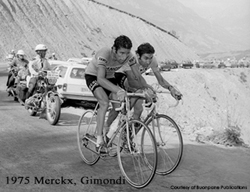
Anquetil “argued that stopping riders using amphetamine would not stop doping, but merely lead riders to use more dangerous drugs.”
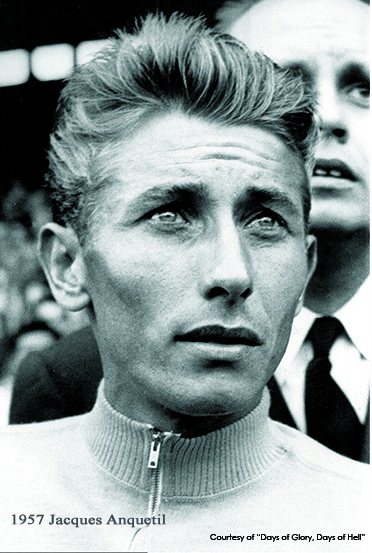
“Spanish rider Luis Ocaña tested positive in his last Tour de France in 1977 which was called the Tour of Doping. “
1978
Belgian rider Jean-Luc Van den Broucke was found positive of steroid use, said:” In the Tour de France, I took steroids. That is not a stimulant, just a strengthener. If I hadn’t, I would have had to give up…. Who can ride classics and long-distance Tours the whole year through without strengtheners?”
Michael Pollentier won the Alpe d’Huez stage and took the yellow jersey. “He had been caught flagrantly trying to cheat during the doping control. Jose Nazabal and Antoine Guttierez were there together. The doctor was suspicious of Guttierez and tugged up his jersey, revealing a system of tubes and a bottle of urine. He then pulled down Pollentier’s shorts and found him similarly equipped. In fact it was a condom. The tube ran from there to the riders’ shorts so that pressure on the condom, held under the armpit, would give the impression of urinating.”
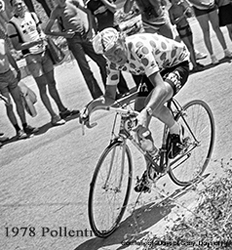
1987
Pedro Delgado tested positive for probenecid, a mask for steroids. Even though the drug was on the prohibited list for the International Cycling Committee, it wasn’t yet on the list for the UCI so they let him slide.
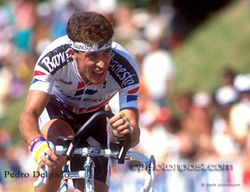
EPO started to become available in Europe. 20 Belgian and Dutch cyclists died young from heart attacks in the next three years. There were no tests yet that could distinguish natural EPO from the synthetic.
1991
The entire PDM team pulled out of the race so they couldn’t be tested. They claimed to have gotten food poisoning at the hotel. It was believed that the steroids they were using were mishandled and everyone got sick.

1996
Bjarne Riis ”…the trouble was the winner was also known as Mr 60%, based on rumors circulating about his hematocrit level. In 2007 he would end up admitting he had cheated by using EPO.”
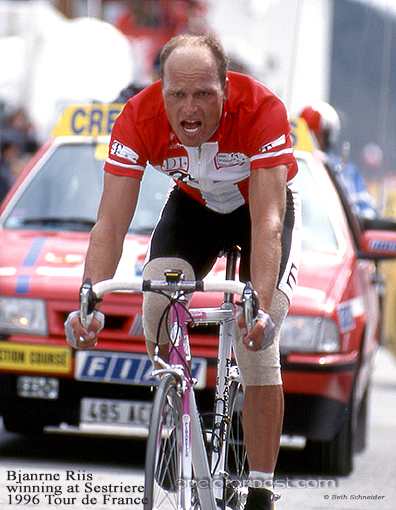
1997
Abdoujaparov failed a drug stage after Stage 2 of the Tdf and was kicked out. He was positive for clenbuterol.
1998
Festina Affair: Festina soigneur Willy Voet was stopped at the French/Belgian border with a carful of doping products including EPO. The race was beset by police raids on team hotels at night and two strikes by riders during the race not to mention numerous press conferences by the Tour organization who was being hounded by the international press. Festina tried to continue to deny doping but was finally thrown out of the race. Cyclists went on strike twice during the race to protest the police raids and the accusations.
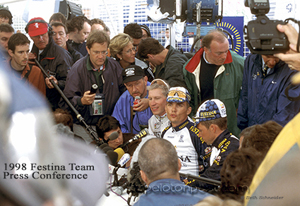
1999
Jacques Goddet organized the TdF from 1936-1987. In 1999 he said: “I brought controls to the Tour in the wake of Tom Simpson’s death in 1967 – and the riders went on strike. After the discoveries made [in to the so-called 1998 Festina scandal], I feel real resentment towards the medical and scientific powers who deceived us for 30 years. The controls are almost always negative, which means that the labs have been making serious mistakes, mistakes that have only served to speed up the growth of this evil. The controls we developed after Simpson’s death were a lie, covered up by the highest scientific and medical authorities, and I condemn them.”
Here they’re on strike in 1998.
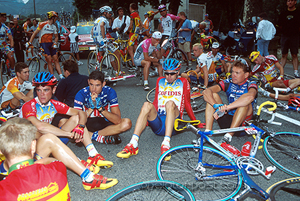
Lance Armstrong won his first Tour and there was a coverup for a positive glucocorticosteroid which was claimed to be for a saddle sore. A back-dated prescription was allowed.
Marco Pantani was forced to take a 2 week break from the Giro because of irregular blood values.
2000
Tyler Hamilton in the yellow jersey in Briancon during the 2000 Dauphine Libere.
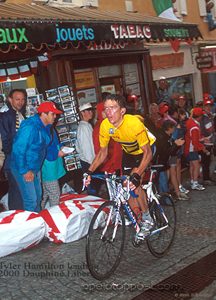
2001
Lance Armstrong won his third Tour de France. Jan Ullrich finished second. In this photo they are in a mob of fans in Orleans. Standing behind them behind the barricades looks to be Dr. Ferrari.
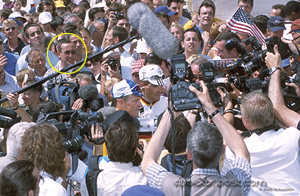
2002
Edita Rumsas, the wife of cyclist Raimondas Rumsas was arrested when caught at the French border with 37 doping products in her car.
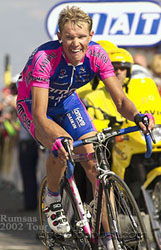
2004
Pantani died of a cocaine overdose.
Philippe Gaumont of Cofidis admitted EPO, human growth hormones, amphetamines and steroid were endemic to the team.
David Millar was caught with used EPO syringes in his apartment by French police.
Jesus Manzano, formerly with Kelme, claimed to have been forced by the team to take banned substances and how to evade detection.
Tyler Hamilton positive A sample after winning gold medal at Olympics.
2005
L’Equipe claimed to have 15 documents from the French National Laboratory for Doping Detection showing him positive in 6. There were no duplicate samples so he wasn’t punished by the UCI. UCI Dr. Zorzoli leaked the 15 forms to L’Equipe.
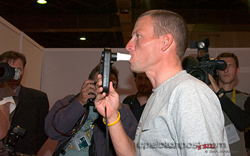
2006
Operation Puerto in Spain erupted. That resulted in pre-Tour exclusions of Ullrich, Mancebo and Basso. The Astana team, even though it was being run by an entirely new group of people was not allowed to start because 5 of its 9 Tour riders were named in Operation Puerto.
Pot Belge, the magic cocktail, was made from amphetamines, cocaine and heroin and was known as a cheap performance enhancing drug mostly used by amateurs.
Floyd Landis had his yellow jersey taken away from him. He had gone on an epic solo on stage 17 in the alps and then tested positive for testosterone. He’s been on a rampage ever since to bring down the sport. He knew he would be tested after winning the stage and he knew what he took. What was he thinking? He was on a new team (Phonak). He’s been blaming Armstrong ever since, even though Armstrong had already retired and was not even at the Tour.
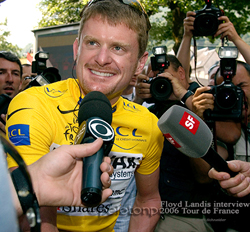
2007
Two German TV stations pulled their Tour coverage after German cyclist Patrick Sinkewitz tested positive for testosterone before the race even started.
Alexandre Vinokourov was found positive for blood doping after winning the Albi time trial and the entire Astana team left the race.
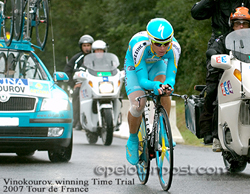
Michael Rasmussen missed several out of competition doping tests earlier in the season. He was leading the race but stories were surfacing about his doping, inaccuracies about where he was when he missed the out of competition doping controls and a rumor that later came out in Velo News about importing animal steroids into Europe via an unsuspecting American cyclist. There was a lot of pressure from the media and he was forced out of the race.
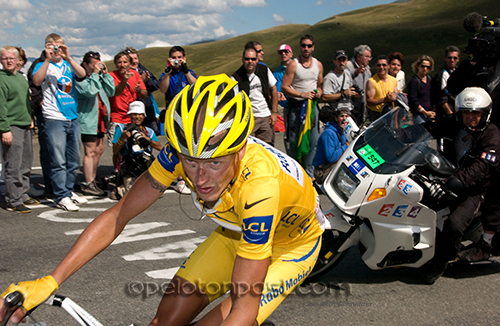
Next to last placed rider Cristian Moreni was selected for a random drug test and found positive on the Col d’Aubisque and the whole Cofidis team was asked to leave the race. He wasn’t winning just because he took EPO. This shows how deep into the peloton the doping goes. Just taking the steroid doesn’t produce a Tour winner, let alone 7 times.
Iban Mayo was found positive for EPO on the rest day and suspended.
2008
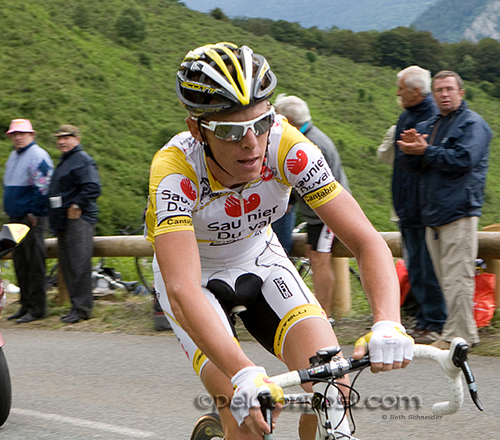
A new test for synthetic EPO caught Bernard Kohl and Riccardo Ricco. They both used CERA-EPO.
2010
Cyclist Kim Kirchen suffered a heart attack, suspected cycling drug use.
2011
Jan Ullrich is implicated in the Telekom affair and Operation Puerto.
2012
Contador is stripped of his 2010 TdF title. He had claimed to have eaten tainted meat and that’s how the clenbuterol drug accidentally got into his system. Here he is neck-in-neck on the Tourmalet alongside Andy Schleck.
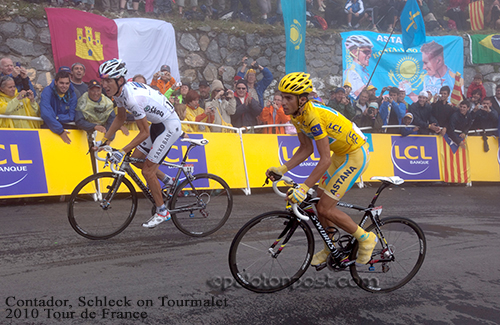
USADA decides to strip Lance Armstrong of all his titles back to 1998 after testimony from former teammates and staff and damning evidence.
Confessions from many cyclists including Bobby Julich, Levi Leipheimer, Dave Zabriski, George Hincapie, Frankie Andreu, Christian Vandevelde, Jonathan Vaughters, Michael Barry, Tom Danielson, Tyler Hamilton and of course Floyd Landis.
See Part 2 of this story for more details.
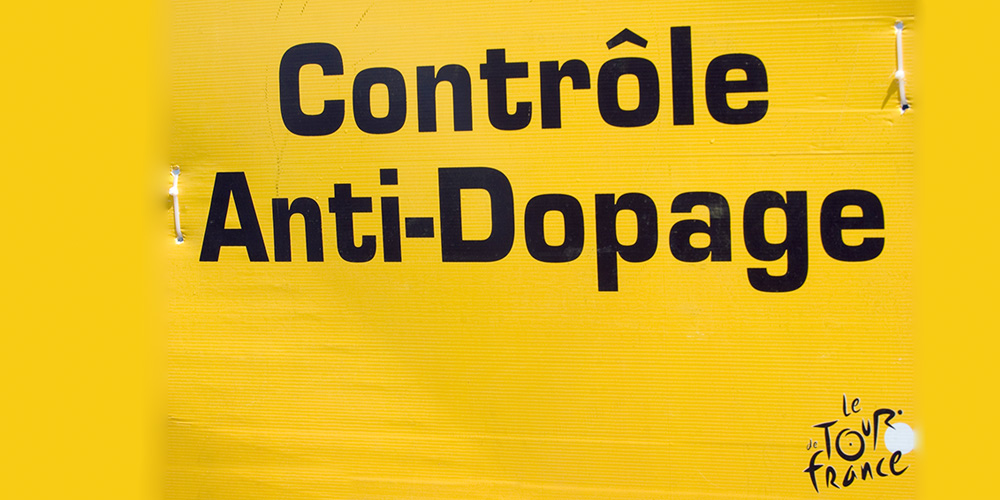
Information taken from the following sources:
“Historical Evolution of Doping Phenomenon”
“Convicts of the Road”
“Days of Glory, Days of Hell”
“Dictionnaire du Dopage”
Peloton Post contributor personal experience

